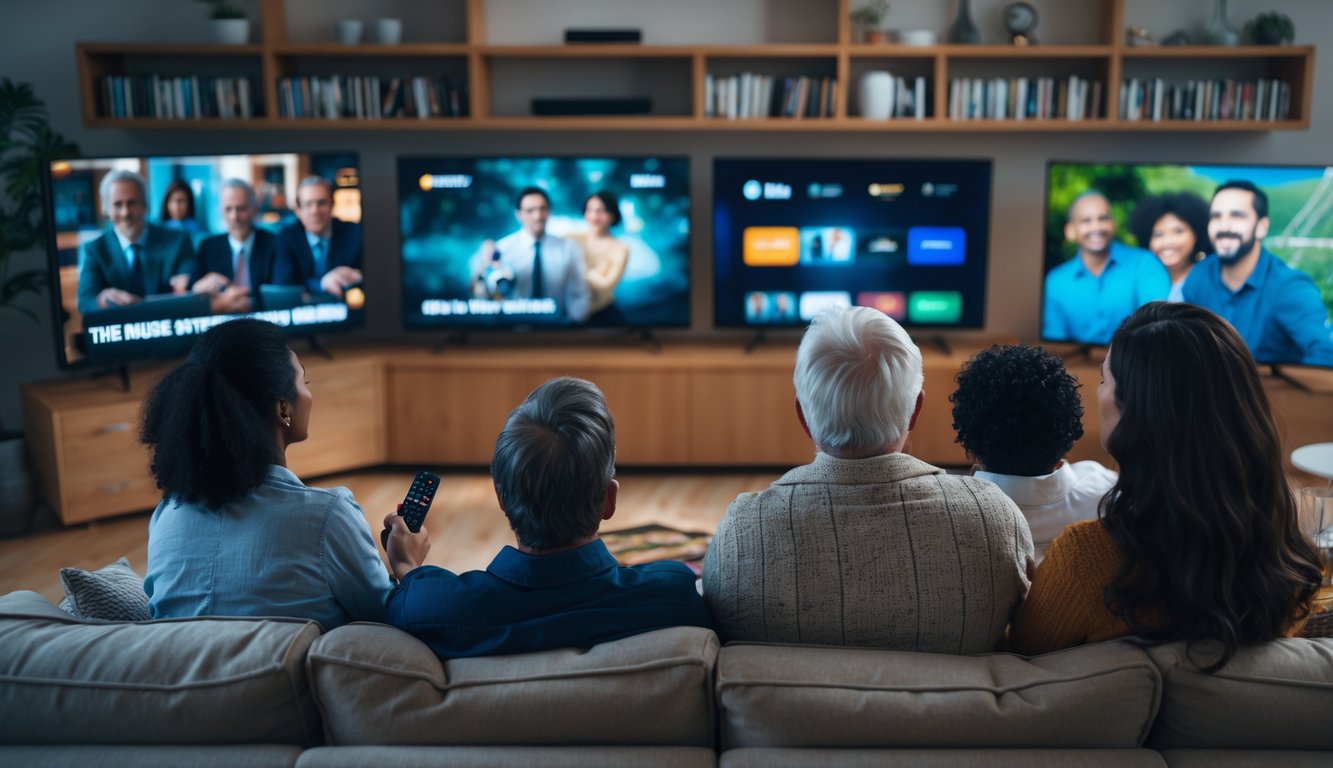
Technological Advancements and Viewing Habits
Smart TVs—love/hate. Bought a 4K Samsung, spent 40 minutes figuring out the remote, and now the thing just bombards me with “AI-powered” recommendations. It’s not just convenience; these features actually mess with what I think I like. Marketers never talk about that. Suddenly, I’m watching stuff I never asked for because the TV nudged me into some weird corner of the streaming universe.
Personalization Powered by Artificial Intelligence
Personalization? Hah. It’s just “let’s show you 20 medical dramas because you watched one ER episode.” 70% of viewers, allegedly, will get AI-driven curation by 2025 (Lantians says so). Sometimes it hits—my pharmacist and I both got served micro-genre picks that were weirdly perfect. But then my nephew visits and suddenly it’s all cartoons. Is this privacy or just exposure? “Leverage user data,” the Deloitte people say. But, let’s be real, the platforms still miss the mark.
Apple TV’s “For You” section? Hot mess, but sometimes, just sometimes, it nails it. Advertisers must love this—personalized trailers, those “watch now” pop-ups everywhere. AI’s shifting how we watch, and marketers are basically chasing their own tails trying to keep up.
Virtual Reality and Augmented Reality Integration
VR headsets—tried them at a trade show, got dizzy, gave up. Kids think it’s cool, adults just want a normal remote. But, yeah, VR and AR overlays (stat pop-ups during games, that kind of thing) are creeping into regular TV. Tech bros swear interactive sports overlays are the next big thing. But most people seem annoyed, not impressed. Studios and Silicon Valley keep cranking out hybrid VR concerts or AR quiz shows, but it all feels like beta testing on a bunch of confused parents.
Numbers say VR subs are spiking for Gen Z and niche fans, but the rest of us? Still clutching the remote. Every new update promises to “fix” the nausea and foggy goggles. Sure, Meta, I’ll believe it when I don’t have to wipe the headset every five minutes.
Generative AI in Content Creation
Procedurally generated game shows—who greenlit this? Hosts sound like they’re reading ransom notes. Generative AI scripts whole comedies, and I heard local news stations are patching together entire segments from AI-mashed Reuters feeds. Writers’ guilds are furious. My agent friend calls it “fast food television”—cheap, everywhere, and yeah, not exactly gourmet.
The wild bit? Some of these shows top ratings, and nobody even notices it’s all AI. And indie creators? They’re using tools like Runway ML and Sora to spit out animated sitcoms or docu-series for pennies. I tried Sora’s beta—half of it was junk, but the speed is nuts. AI’s changing what gets made, how fast, and honestly, why bother hiring a writer’s room if a bot can churn out 10 pilots before lunch?
Changing TV Consumption Patterns
Channel guides? Prime time? What even are those? Advertisers and viewers are just clinging to live sports or the occasional prestige drama, but mostly, everyone’s got a streaming app running in the background while they do literally anything else.
Rise of On-Demand vs Scheduled Programming
People expect to watch anything, anytime. The last time I set an alarm for a show was the “Lost” finale, and my phone had physical buttons. Stats say 72% of adults still use cable or broadcast monthly, but if you look at 2025 trends, those same people will binge an entire season in a weekend. Commercial breaks? Ancient history. Tell someone you “waited” for a show and they’ll look at you like you’re rewinding a VHS with a pencil.
Parents, sports fans, my accountant mom—they’ll still gather for live events. Everyone else? TV’s just an endless buffet. Binge-watching is the new normal. Appointment TV is dead, and nobody’s crying at its funeral.
Shift Toward Digital Platforms and Devices
Scrolling. Always scrolling. I bounce from Netflix to Hulu to YouTube, then my brain just checks out. Content consumption is twitchy, distracted, compulsive. Nielsen’s breakdown makes it clear: streaming’s up, linear TV’s tanking (down 13% to “only” $51 billion—like that’s chump change).
Grandma’s on an iPad, everyone’s juggling phones, tablets, TVs, laptops. It’s like a gas station snack aisle—so many options, but you always end up with the same three. Discoverability’s still a joke—60% of my friends scroll for eight minutes, get bored, and just rewatch something old. “New movie drops” still feel special, but everything else? Just background noise between browser tabs.
Impact on Storytelling and Content Formats
Endless menus, channel flipping, and now stories are either micro-episodes or stretched to infinity. TV formats are mutating. Who’s even counting how many genres just skip endings? “Serialized content” might soon mean a flashback to your coffee order.
Serialized Content and Episodic Storytelling
Studios keep claiming they’re “serving the binge audience,” but half the time, a flagship series gets so tangled up in serialization that the main plot disappears under a pile of flashbacks and cliffhangers. Nielsen says 48% of young adults want to binge whole seasons, not dabble episode by episode. So, even sitcoms get re-engineered—episodic arcs get trashed for messy, ongoing stories. Sometimes it works, sometimes it’s just confusing, like finding socks in the fridge.
But it’s not just about what people want; streamers push these endless serialized universes because it keeps those watch-time charts climbing. Try recapping a show now—good luck. The list of abandoned subplots just keeps growing. And indie producers? They get squeezed out, since cliffhangers need big upfront cash. Not that anyone’s bragging about that on LinkedIn.
Emotional Depth and Character Growth
So, here’s what I can’t shake: every time I watch a new drama, suddenly the background barista’s got a tragic backstory. Like, really? Does every side character need unresolved childhood trauma now? Maybe it’s what audiences want—at least, that’s what some Fiveable analysis said, tossing out numbers about “character complexity” like it’s the only thing that matters. I guess if you’re a drama fan, you eat that up, but I’m just sitting here wondering who keeps inventing these metrics. “Character complexity”—who comes up with this stuff? Awards judges? Podcast hosts desperate for a hot take? I don’t know.
Authenticity, though? That’s a whole other mess. Some shows try to look “real” by letting characters just wander around emotionally, but I swear, I can spot a focus-grouped character arc before the opening credits finish. Algorithms are in charge now. If a romance subplot flops, poof—gone by episode six, no one mentions it again. I read this showrunner interview where they literally had a table comparing “projected” versus “actual” emotional responses. Wish I’d saved it. Just to prove, yeah, emotional depth is another spreadsheet now.



